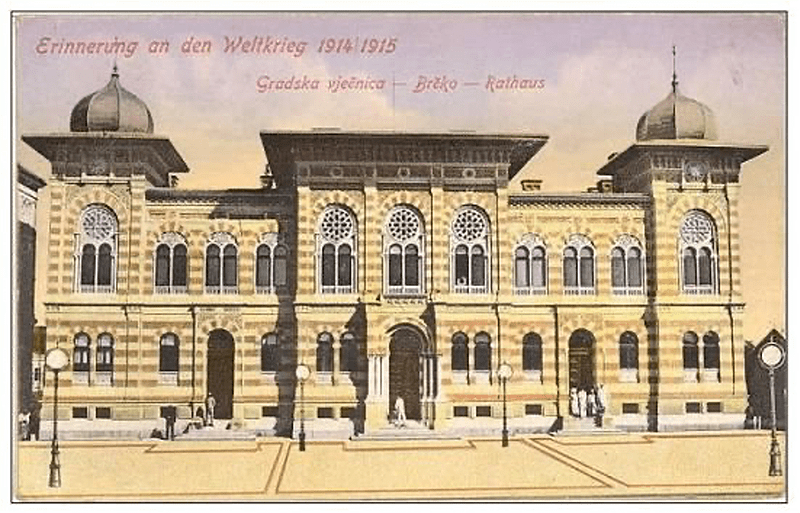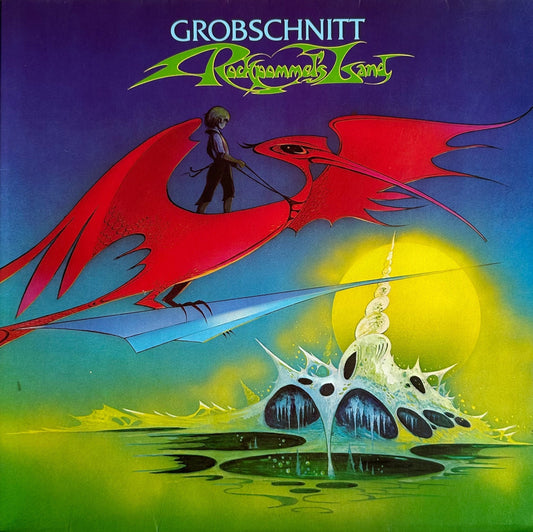The early years of my life were spent on my maternal grandmother’s farm. While Opa (grandpa) worked at the paper mill, Oma raised pigs and grew greens and grapevines. I passed the time feeding chickens and collecting fruit from trees and berry bushes, occasionally bringing back a handful of mushy, warm raspberries. Whatever we didn’t preserve or eat was bartered for dairy and grains from neighboring farms. The barn was twice as large as the three-room house and surrounded by dense shadowy woods – the domain of childhood nightmares where witches, wolves, and vampires roamed.
The only way off the farm was a narrow lane leading to a dirt road which led to the village, the center of which was the local church, Our Lady of the Snows, where just about everyone was baptized, married, and buried. There wasn’t much else except a small general store, tavern, and post office. Along that road to Zgornja Velka, there were as many horses as cars, and most people commuted by bus or bicycle. Through the 1970s, my Slovenian oma still had an outhouse, a wood-burning stove for heat and cooking, and drew well-water from a hand pump. We had radio and limited television programming, but the real entertainment was performed live at taverns and celebrations.
Because Slovenia had been passed from one Germanic empire to another for a thousand years, the music was a mix of accordion-centered polka, Austrian waltzes, and regional alpine folk music – all of which would be familiar in any beer hall or harvest festival. Our most famous export, Slavko Avsenik und seine Original Oberkrainer ensemble, has played polka worldwide to German-speaking people, Slavs, and other enthusiasts. If you’ve enjoyed polka in North America, chances are the Avsenik family was an influence. Unless it was at the Heidelberg Restaurant, I didn’t hear polka too often growing up after we moved to New York, but it has always lived comfortably in my psyche, alongside Jimi Hendrix and Slayer.
Before the 1990s civil war tore Yugoslavia apart, my parents and I would return for several weeks at a time to visit family and friends. We’d land in Munich and proceed on old-fashioned sleeper trains: through alpine passes, past deserted stuccoed stations bathed by amber lamps, into the sweetest air of slumbering farms, and through remote twinkling villages, until we reached the rising sun of Brčko (byrr-ch-koe) in northeastern Bosnia-Herzegovina, where my stepfather’s family lived. Compared to Slovenia, just 200 miles to the north, Bosnia was a starkly different world. (As Bosnia and Herzegovina is a union of two regions, I will refer to the northern area simply as Bosnia for the sake of brevity, and Bosnia-Herzegovina for the entire country.)
My Bosnian grandma, Emina, an urbane and urban dowager, lived in a large apartment with indoor plumbing, artwork, and antiques. She also didn’t grow her own food because shops, restaurants, and cafes were right outside along paved streets. Exciting new sights and sounds filled my day until 3 pm when the entire city reposed for two hours. With most stores and houses shuttered, I sat with my grandmother drinking surreptitious cups of coffee while struggling to relearn Bosnian with its smattering of Arabic words.
On market days, I accompanied Emina past minarets and church towers and a town hall that now reminds me of a Moorish fortress. I felt important walking with my “majka” as she introduced me to people along her shopping route. Although she was a mother-in-law and grandmother to many, we all called her Majka, a Slavic word for mother. [NB. the ‘aj’ in majka sounds like eye]. The central market was an overflowing rainbow of melons, peppers, and people who came from farms on the outskirts of town. Children walked barefoot in the summers, older men still wore fezzes and traditional hats, and older women donned kerchiefs on their heads against the sun. There might even be an occasional group of colorful Romani Muslims passing by on a horse-drawn carriage. Had it been just seventy years earlier, the marketplace would have been a scene of turbans, veils, and baggy pants.
Majka was always given the best and treated with the type of respect my other grandmother had never known. Anywhere we went in town, Majka was addressed as Begovića or the wife of a Beg (chieftain). Socialist Yugoslavia did away with aristocracy, but the older people of Brčko still remembered prominent families. After all, Majka’s Ottoman in-laws had been in Bosnia since England’s King Henry VIII sat on the throne.
Back home, Majka prepared a midday salad of cucumbers, tomato, and onions accompanied by warm pita bread and kajmak (thick fermented cream). We sat on old Persian rugs eating from a table with short legs. Afterward, aromas of sweet, buttery, walnut baklava and Turkish coffee permeated the air. The beans, which she roasted herself, had to be ground to a fine powder using a cylindrical hand-cranked copper grinder, which I was allowed to operate. The reward would be a children’s coffee diluted with milk and served with large rectangular sugar cubes dipped halfway into the cup, bitten off, and chased with coffee.
Drinking kahva was a constant ritual. Anytime you crossed a threshold, a copper pot of thick creamy coffee appeared ready to accompany joy, tragedy, and the worries of daily life. I was entertained listening to the adults argue, laugh, and yell over each other late into the night. Eventually, they would start singing – usually, my stepfather, who opted for a cocktail in addition to coffee. Observant Muslims generally do not consume alcohol, but many were non-observant by the late 1960s. Suddenly, my stepfather would raise his eyes and hands to the heavens and start singing a sad song as tears streamed down his face. He sang these tunes in Manhattan too, but I thought he made them up as he went along. Being home seemed to release torrents of emotions. Just as I rolled my eyes and before my mother could say, “Oh Hans, please don’t!” everyone else joined in singing and weeping.
The melancholy songs could go on for hours as they remembered dead and distant relatives, heroes, Begs, Pashas, and prominent cities like Banja Luka, Sarajevo, and even Stambolu na Bosforu (Istanbul on the Bosporus). The songs celebrated the ancient world and the recent past, reminding them of pain, ecstasy, and unrequited loves. Except for religion, reserved for the mosque, there was a song for everything – even one about making coffee! I understood a few words, but I could always identify “Majka moja!” It’s the Slavic version of mamma mia! Songs often involved mothers and the greater concept of Mother, the matriarch and hub of the family and your emotional, physical, and spiritual home. It’s the name you invoke when times are good or, more likely, bad. These threads make up the very essence of Sevdah music.
Named after the Turkish word for love, Sevdah is the traditional folk music of Bosnia-Herzegovina, based on poems by forgotten authors that survived through oral tradition, and provided inspiration for newer music. Sevdah had a big post-World War II resurgence and also attracted artists from other parts of Yugoslavia. Between the 1960s and 1980s, a score of singers dominated the airwaves, crossing borders to establish Yugoslav identity and unity. However, a Sevdah song (Sevdalinka) is not focused on the instrumental or vocal superiority of highly trained musicians – as evidenced by my family gatherings. It is neither an act nor a show: it’s about becoming the song by feeling the emotions, understanding the poet’s message, and experiencing the weight and texture of every word.
It is accepted that Sevdah began with the arrival of the Turks in Bosnia-Herzegovina, but its prior origins and development are as mysterious as its sound. One of the oldest Bosnian Sevdalinkas dates to 1475 and is about a man called Mujo, a typical Muslim name that occurs in many songs. Did it sound anything like this heroic epic poem? Click on the photo or on this link to listen:
(It’s the story of Mujo, who seeks to capture a man who was burning towers and kidnapping women. The bard is likely using a bowed gusle like in the photo above. Full credit for deciphering this poem goes to my Bosnian cousin, Emina. Image courtesy of Old Postcards of Bosnia.)
However, the Ottomans didn’t arrive in Bosnia-Herzegovina on the overnight train. It was a voyage of 300 years and thousands of miles starting in 1299, when the House of Osman expanded through the Middle East, across North Africa, Greece, and eventually most of Europe south of Austria and between the Adriatic and Russia. It’s fascinating to ponder what else influenced Turkish court musicians. Did they bring elements of Cairo, Damascus, and Athens to Bosnia-Herzegovina before encountering indigenous Christian Slavs who had their own music – perhaps precursors of this “dance song?”
(The beautifully mournful polyphonic singing common in Herzegovina, Croatia, and Serbia mentions the Kolo, or circle dance, probably one of the first dances performed by humans as they joined hands and spun around a fire.)
Add influences from Sephardic Jews fleeing the Spanish Inquisition, and Roma musicians, plus another 400 years of Slavic and Turkish intermingling, and we have the style of Sevdah I listened to in the heyday of 1974. I still prefer that era’s old-school vibrato-heavy female singers, like Nada Mamula and Beba Selimović.
(Recorded in 1962 by Beba Selimović, Put putuje Latif Aga is a popular song written about Latif-aga Tetaric and his friend Suleiman Selman who travel the road back to Turkey as the Austro-Hungarian Empire captures Bosnia-Herzegovina in 1878.)
We can be confident that lutes were Sevdah’s main instruments – possibly accompanied by other local archaic strings, percussion instruments, and woodwinds. Still, the sound of Sevdalinka changed forever when the Habsburg-era accordion replaced the Saz lute as the centerpiece, thus severing a significant link to antiquity. Fortunately, many current bands use traditional instruments together with modern ones and the ever-present accordion. Here is a rendition of Put putuje Latif Aga by the Barcelona Gipsy Balkan Orchestra:
Along with a fresh crop of world music bands, I’m part of the next generation who is slowly finding new meaning and connections through folk music. As a child in America, I concealed my adopted family. I never let on that my stepfather’s real name was Hasan and not Hans, and I certainly never told anyone that he was born Beg Hasan. Unless my friends’ grandparents also drank muddy coffee and ate unpronounceable food, I never mentioned Bosnia or Turkey. The Ottoman Empire might not be in my genetic code, but it has imparted to me an incredibly rich heritage. As a result of the Turks’ long journey, Sevdah links me to cultures far beyond my birthplace in rural Slovenia. When I can recognize even a single common tone, word, or melody in another’s music, then we are automatically more connected than divided. Our shared experiences of pain, love, and joy go beyond religion, class, or nationality. And, that too is the essence of Sevdah.
If you want to learn more, click here.




